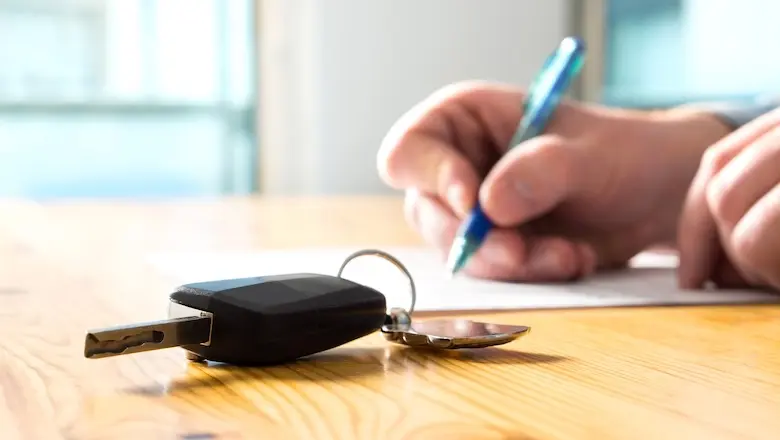College Planning Checklist for Parents
College planning is an exciting time for you and your child. But, as exciting as it may be, there is a lot of preparation involved.
So, whether your child is entering into their freshman year of high school or a few months away from graduation, there is no better time to start planning for college than the present.
From figuring out your financials to helping your child prepare for admission exams, this college planning checklist for parents can help streamline your child’s transition from high school to college.
Table of Contents
Key Points
• Begin planning for college early to ensure you and your child are well-prepared for the college journey, from applications to move-in day.
• Create a budget and explore financial aid options, including scholarships, grants, and student loans, to manage college costs effectively.
• Take campus tours and attend information sessions to help your child make an informed decision about where to attend.
• Keep all important documents, such as financial aid forms, transcripts, and identification, organized and easily accessible.
• Provide emotional support and encouragement, helping your child navigate the transition to college life and feel confident about their new journey.
Starting a Savings Plan
According to the Education Data Initiative, the average cost of college in the U.S. is $38,270 per year, including books, supplies, and daily living expenses. Indeed, the cost of going to college has more than doubled over the past two decades.
With this in mind, it’s wise to start saving for college. But, while many parents may have the best intention of helping their children pay for their college expenses, they often fail to prepare.
So, even if your child is just now entering high school, you can still start saving and preparing for college costs. It’s never too late to start setting money aside for your children’s education.
💡 Quick Tip: You can fund your education with a low-rate, no-fee private student loan that covers all school-certified costs.
Paying Close Attention to Grades and Curriculum
Since grades and curriculum are crucial to getting an acceptance letter, you may want to keep close tabs on your student’s grades and study habits. From helping with studying to supporting homework expectations, getting involved with your kid’s coursework may help them perform better in school.
You may also want to encourage them to take Advanced Placement courses. Since AP courses allow you to tackle college-level material while your child is still in high school, your student may get ahead by taking some.
Recommended: ACT vs. SAT: Which Do Colleges Prefer?
Encouraging Involvement with the Community
While the top factors in admission decisions tend to be academics, the next most important factors typically include a student’s demonstrated interest and extracurricular activities.
Encouraging your child to get involved in the community could potentially help them write a solid college application, and even help them decide what they want to do with the rest of their lives.
For example, if your child loves to run, they may want to try out for the track team to round out their classes or volunteer as a track coach for a youth team. Or, if they prefer journalism instead of sports, they may want to try writing for the school newspaper.
Not only will getting involved help with their college application, but it will also help sharpen their skills. So, don’t be afraid to encourage them to explore their passions and get involved with the school and/or local community. You might even want to get involved with them.
Planning for the SAT and ACT
Another key component to receiving acceptance letters from colleges and universities is having acceptable SAT and ACT scores. Some schools require the Scholastic Aptitude Test, known as the SAT, while others may require the American College Testing, known as the ACT. Some schools will accept either one, but it’s a good idea to check the preference of the schools your child will apply to.
To help your child prepare, you can encourage them to sign up for an after-school prep class or practice at home by using online resources such as Khan Academy’s free SAT practice program in partnership with The College Board.
Recommended: How to Help Your Child with SAT Practice
Researching Schools
One of the most important components of college planning for your child is helping them decide which university or college is the right fit. Fortunately, there are plenty of options available to help you find a school that will fit your child’s education and experience needs.
To get started in the decision-making process, you may first want to help your child decide what degree they would like to achieve. If they know they want to be an engineer, for example, you may want to focus on schools with good engineering programs.
It’s also wise to consider factors such as location and the type of college experience your child wants to have. For example, if they want to go to a school close to home and commute to save money, that desire will limit the search parameters.
Remember, while you may be the voice of reason, the ultimate decision is up to your child — the student. Simply help them evaluate all of the key factors in making an informed decision.
Scheduling College Visits
College visits can be a big help when it comes to finding the right fit. With this in mind, you may want to help your child plan a college visit well in advance of making a decision. The College Board recommends scheduling your visits during your child’s junior year in the spring if you have already researched schools.
For seniors, it may be best to schedule visits in the fall through the winter months. This may help seniors narrow down their options.
Since you want your child to get a feel of the college experience, you’ll want to make sure classes are in session. Therefore, it’s also wise to avoid visits during holidays or break weeks.
💡 Quick Tip: Would-be borrowers will want to understand the different types of student loans that are available: private student loans, Federal Direct Subsidized and Unsubsidized Loans, Direct PLUS Loans, and more.
Investigating Financial Aid Options
Even if you have saved for your child’s education, you may want or need to explore other funding options, which could include your child taking on some of the cost.
Completing a Free Application for Federal Student Aid (FAFSA®) is one of the first recommended steps to applying for student financial aid, whether that is in the form of grants, scholarships, federal loans, or work-study.
It’s recommended to complete the form as soon as possible because there are differing deadlines to be aware of, including for individual colleges as well as federal and state deadlines. The sooner you submit your FAFSA, generally, the better your chances of receiving aid will be.
Colleges and universities will use the information reported on the FAFSA to determine how much aid a student is eligible for. Even if your child has not applied to a school yet, they can list that school on the FAFSA, so encourage them to include their dream school as well as those they consider safety schools.
Comparing each financial aid award letter can help you and your child determine the financial obligation of attending each school. It is recommended to exhaust all federal aid options before considering a private loan, but if you are looking for supplemental funding for your child’s education, private student loans may be an option.
The Takeaway
College planning is a significant journey that requires careful preparation and support. By starting early, managing finances wisely, visiting campuses, organizing important documents, and providing emotional support, parents can help their children navigate this exciting transition with confidence and ease.
Parents and students can pay for college with cash savings, federal financial aid (including grants, scholarships, and student loans), and private student loans.
If you’ve exhausted all federal student aid options, no-fee private student loans from SoFi can help you pay for school. The online application process is easy, and you can see rates and terms in just minutes. Repayment plans are flexible, so you can find an option that works for your financial plan and budget.
FAQ
When should parents start planning for their child’s college journey?
Parents should start planning early, ideally during the child’s high school years, to ensure they are well-prepared for the entire college process, from applications to move-in day.
What are some important financial steps parents should take when planning for college?
Parents should create a budget, explore financial aid options like scholarships, grants, and student loans, and understand the costs associated with college to manage expenses effectively.
How can parents support their child’s emotional transition to college?
Parents can support their child’s emotional transition by providing encouragement, being a listening ear, and helping them feel confident and excited about their new college life.
About the author
SoFi Private Student Loans
Please borrow responsibly. SoFi Private Student loans are not a substitute for federal loans, grants, and work-study programs. We encourage you to evaluate all your federal student aid options before you consider any private loans, including ours. Read our FAQs.
Terms and conditions apply. SOFI RESERVES THE RIGHT TO MODIFY OR DISCONTINUE PRODUCTS AND BENEFITS AT ANY TIME WITHOUT NOTICE. SoFi Private Student loans are subject to program terms and restrictions, such as completion of a loan application and self-certification form, verification of application information, the student's at least half-time enrollment in a degree program at a SoFi-participating school, and, if applicable, a co-signer. In addition, borrowers must be U.S. citizens or other eligible status, be residing in the U.S., Puerto Rico, U.S. Virgin Islands, or American Samoa, and must meet SoFi’s underwriting requirements, including verification of sufficient income to support your ability to repay. Minimum loan amount is $1,000. See SoFi.com/eligibility for more information. Lowest rates reserved for the most creditworthy borrowers. SoFi reserves the right to modify eligibility criteria at any time. This information is subject to change. This information is current as of 4/22/2025 and is subject to change. SoFi Private Student loans are originated by SoFi Bank, N.A. Member FDIC. NMLS #696891 (www.nmlsconsumeraccess.org).
SoFi Loan Products
SoFi loans are originated by SoFi Bank, N.A., NMLS #696891 (Member FDIC). For additional product-specific legal and licensing information, see SoFi.com/legal. Equal Housing Lender.
Non affiliation: SoFi isn’t affiliated with any of the companies highlighted in this article.
Financial Tips & Strategies: The tips provided on this website are of a general nature and do not take into account your specific objectives, financial situation, and needs. You should always consider their appropriateness given your own circumstances.
Third-Party Brand Mentions: No brands, products, or companies mentioned are affiliated with SoFi, nor do they endorse or sponsor this article. Third-party trademarks referenced herein are property of their respective owners.
SOISL-Q325-077
Read more




